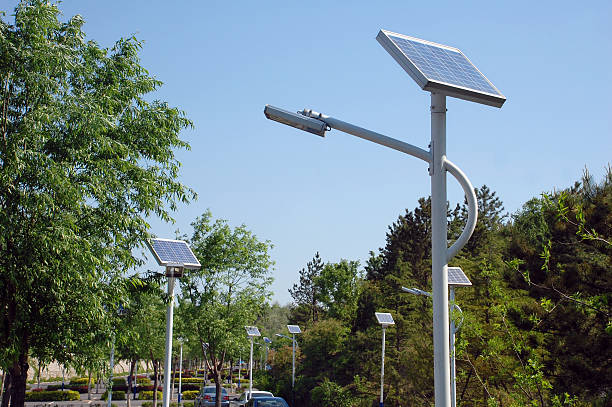
The world has experienced uneven economic growth. Infrastructural development comes last when compared to other sectors all over the world, rural areas face significant challenges. The absence of efficient and effective grid power in these areas makes setting up street lighting a very expensive affair. The cost implications of having no reliable power sources add on the expenses even further. Solar power has proven to work best in remote regions, and village solar street lights are the best example of sustainable form of lighting. For B2B businesses that aid in infrastructure development, the advantages solar street lights offer need to be better understood.
This article examines the reasons why solar street lights are effective for rural infrastructure development by evaluating the cost, environmental impacts, and sustainability factors. In addition, we will demonstrate the contribution street light manufacturers play in creating these novel ideas.
The Need for Sustainable Lighting in Rural Areas
There are many issues linked to not having reliable street lights in rural communities. Accidents, crime, and general peril are likely to happen because of poor visibility after sunset. It is also common that traditional street lighting systems which depend on grid electricity are simply not feasible in remote areas because of infrastructural costs and the logisti-cal challenges associated with power line extensions.
Solar lights for rural areas solve these challenges brilliantly. These lights are often devoid of extensive infrastructural requirements because they use solar energy which is abundant in most rural areas. Consequently, they can effectively and economically be used to light public spaces, streets, and pathways in the rural areas.
Cost-Effectiveness of Village Solar Street Lights
Cost-effectiveness is one advantage solar village street lights have over other types of street solar lights. With hand operated street lights, there is a great deal of operational costs as they incur electricity bills. Solar powered lights on the other hand, make use of free sunlight. This results in no cost being incurred on energy consumption, translating to long term investment for the rural communities.
Additionally, solar street lights require little to no upkeep, which makes them especially useful in remote locations where technicians and parts are hard to come by. Since solar lights can last anywhere from ten to fifteen years, they are a dependable source of illumination that requires little upkeep and can lower maintenance costs for local governments and infrastructure developers.
Businesses can partner directly with trusted street light manufacturers to obtain premium quality solar-powered lights that cater to the unique requirements of the rural population in terms of durability and long-lasting service.
Environmental Benefits of Solar Lighting in Rural Areas
Fossil fuel reliance is a primary concern when integrating new solar panel technology into rural infrastructural projects. The environmental implications such as dependence and fossil fuel-induced carbon emissions provide tremendous benefit. The solar street lights placed in villages utilize renewable resources such as sunlight, making them environmentally safer than grid-powered illumination systems.
The benefits solar street lights provide for protecting the countryside gets taken into greater consideration within rural regions where conserving nature tends to be one of the major goals. The contribution of solar powered lighting to the reduction of traditional energy sources enables easier preservation measures to be implemented, making it suitable for rural communities seeking to enhance their surroundings while striving to reduce environmental impact.
Furthermore, because their illumination is strategic and efficient, solar lights minimize light pollution. This guarantees that only particular areas are illuminated, reducing energy waste and negative impact on the environment.
How Village Solar Street Lights Enhance Rural Infrastructure
Village solar street lights do more than simply provide lighting; they help enhance rural infrastructure. Solar street lights enable safety and accessibility by reliably lighting up public areas such as streets, parks and community areas. This, in turn, leads to greater economic development as improved infrastructure fosters business and tourism.
In addition, solar-powered street lights can enhance education and healthcare services by increasing access to essential services in rural areas. Students in rural areas will now be able to utilize more productive time for studying and healthcare facilities can operate longer, which helps to mitigate some challenges that rural communities face regarding access to resources and services.
By partnering with a qualified street light vendor, companies can rest assured that these lights are tailored for rural infrastructure and consider factors such as performance in varying conditions and remote location ease of installation.
The Influence Street Light Manufacturers Have in Rural Development
The implementation of street lights in rural settings is remarkably facilitated by the work of rural street light manufacturers. The responsibility of these street light manufacturers is to come up with building rural-appropriate lighting systems that are reliable, high quality, and energy-efficient. This goes beyond the mere production of lights as a street light manufacturer has to offer rural communities advanced technical customization support and expertise around the lights.
For the purpose of improving their services, most streetlight manufacturers do not only stop at manufacturing the lights. They provide remote monitoring services, maintenance, and installation ensuring optimal performance over the life of the lights. This multi-faceted methodology assists in tackling some of the problems associated with the rural development and maintenance infrastructure.
B2B companies acquire products with certain preconditions in mind, like the amount of solar energy in the region or the rainfall, by working in conjunction with solar street light manufacturers.
Conclusion
In comparison to other forms of infrastructure development, solar village street lights offer a more economical, green, and eco-friendly solution to the pervading issue of illumination in remote areas. These lights guarantee reliable illumination without expensive modern grid infrastructures, making them ideal for rural areas that struggle to access conventional power sources. Rural communities stand to benefit significantly from improved street lighting, as it enhances safety and accessibility. By collaborating with professional street light manufacturers, B2B companies can deploy these products to rural communities and enable millions of people globally to enjoy an improved quality of life.
The shift to solar-powered lighting technologies is already transforming rural Infrastructure, and village solar street lights are expected to become an even more integral component alongside solar-powered technologies. By investing in solar lighting technologies, businesses involved with rural development stand to gain not only from an emerging market opportunity, but are also strategically enhancing their public profile as builders of sustainable and economically just rural communities.
